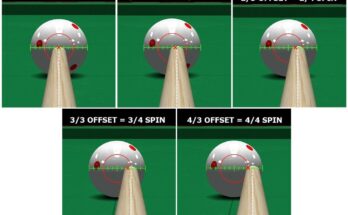Mastering Billiard Knowledge: A Comprehensive Guide to Pool Tables, Cues, Balls, and Techniques

Dive into the fascinating world of billiards with our detailed “Billiard Knowledge” infographic, a must-have resource for beginners and seasoned players alike. This comprehensive guide breaks down every essential aspect of the game, offering an in-depth look at pool table anatomy, cue stick components, ball types, racking techniques, and basic playing skills—all presented in an easy-to-understand visual format.
The infographic begins with an exploration of pool table anatomy, highlighting key areas such as the head rail, foot rail, playing surface, head string, foot spot, and the critical triangle rack outline. This section provides a clear layout of the table, helping players understand the spatial dynamics and strategic points of play.
Next, delve into the cue stick anatomy, where each component—ferrule, taper, shaft, joint, butt (forearm), wrap, sleeve, and inlays—is meticulously labeled. This section also includes tip change options, showcasing a variety of tips like layered leather, standard leather, and specialty tips (e.g., Predator Victory, Kamui Black), along with their sizes (soft, medium, hard) and approximate costs, enabling players to choose the right equipment for their style.
The guide then moves to billiard balls, comparing sizes and types across different games. Learn about Russian billiard balls, American pool balls, English-style pool balls, carom balls, and snooker balls, complete with a visual representation of an 8-ball rack. This section is perfect for understanding the diversity of equipment used in various billiard disciplines.
For those looking to perfect their setup, the how to rack 8-ball pool section offers a step-by-step guide with six illustrated stages. From placing the 8-ball in the center to ensuring a tight rack with the apex ball on the foot spot, these instructions ensure a fair and competitive start to every game.
Finally, master the billiard basic techniques with diagrams illustrating the perpendicular, jump, force follow, and three bridge styles (open, closed, and rail). These visuals, paired with concise descriptions, provide practical insights into shot execution, grip, and hand positioning, enhancing your gameplay skills.
Whether you’re setting up your first pool table, upgrading your cue, or refining your technique, this “Billiard Knowledge” infographic is your ultimate resource. Printed on a vintage-style background, it combines educational content with an aesthetic appeal, making it a perfect addition to any game room or a thoughtful gift for billiard enthusiasts. Explore, learn, and elevate your billiard game today!



